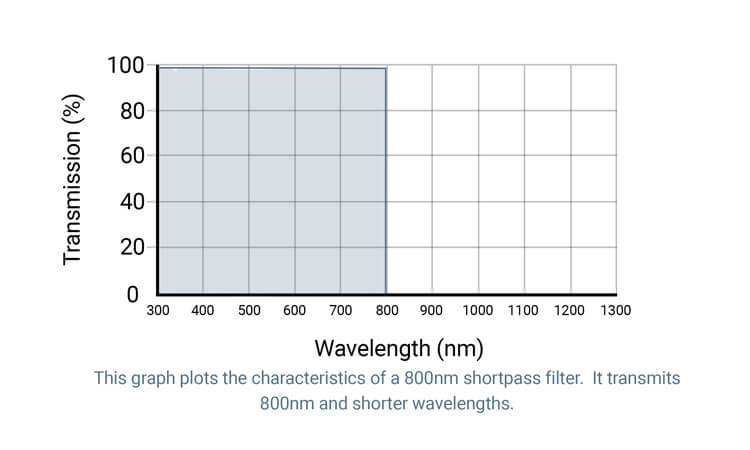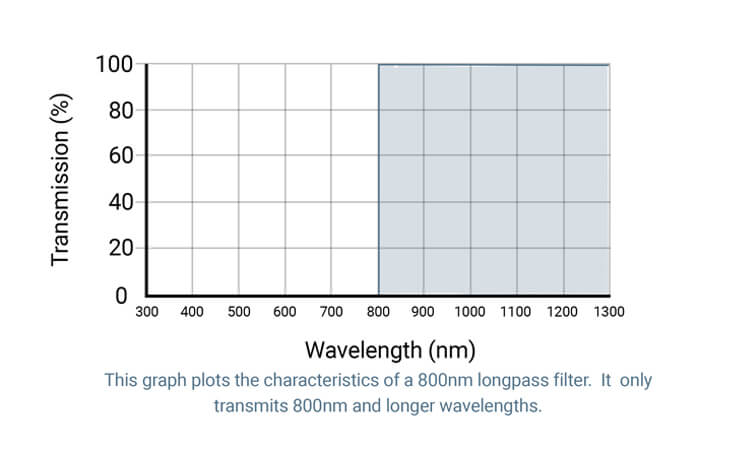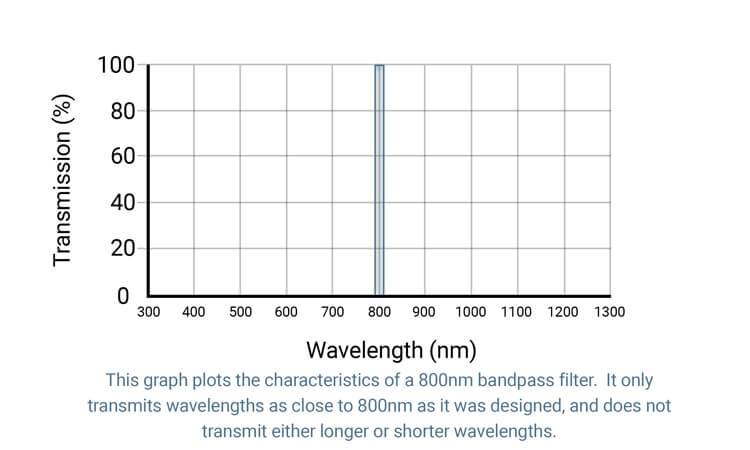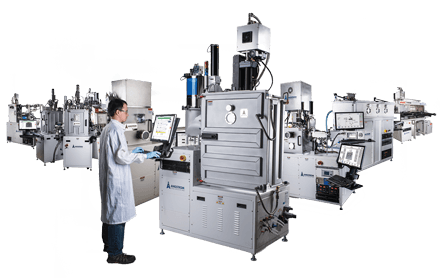Optical Filters
Optical filters are passive devices that allow the transmission of a specific wavelength or set of wavelengths of light. There are two classes of optical filters that have different mechanisms of operation: absorptive filters and dichroic filters.
Absorptive filters have a coating of different organic and inorganic materials that absorb certain wavelengths of light, thus allowing the desired wavelengths to pass through. Since they absorb light energy, the temperature of these filters increases during operation. They are simple filters and can be added to plastics to make less costly filters than their glass-based counterparts. The operation of these filters does not depend on the angle of the incident light but on the properties of the material that makes up the filters. As a result, they are good filters to use when reflected light of the unwanted wavelength can cause noise in optical signal.
Dichroic filters are more complicated in their operation. They consist of a series of optical coatings with precise thicknesses that are designed to reflect unwanted wavelengths and transmit the desired wavelength range. This is achieved by causing the desired wavelengths to interfere constructively on the transmission side of the filter, while other wavelengths interfere constructively on the reflection side of the filter.
There are three types of optical filters: shortpass filters, longpass filters, and bandpass filters. A shortpass filter allows shorter wavelengths than the cut-off wavelength to pass through, while it attenuates longer wavelengths. Conversely, a longpass filter transmits longer wavelengths than the cut-on wavelength while it blocks shorter wavelengths. A bandpass filter is a filter that lets a particular range, or “band”, of wavelengths to go through, but attenuates all wavelengths around the band. A monochromatic filter is an extreme case of a bandpass filter, which transmits only a very narrow range of wavelengths.
Shortpass Filters

Longpass Filters

Bandpass Filters

Optical filters are very important in laser experiment applications. Laser safety glasses are optical filters you can wear to protect your eyes from laser radiation. They typically filter out a small range of wavelengths to allow you to see your surroundings while working on an optical experiment while a laser is turned on. It is very important to wear safety glasses that are rated for the laser wavelength being used.
Optical filters are also important as optical components in laser experiments. For example, when measuring the photoluminescence (PL) of a material, all the light being emitted from the spot that is being excited by a laser is coupled into an optical fiber and measured in a spectrometer. The light of the laser is very intense, and depending on what value the wavelength of photoluminescence is, the laser light could overcome that signal. Applying a filter for the laser wavelength somewhere between the film and the lens that collects the light coming from the film reduces or eliminates the laser peak, allowing us to see the photoluminescence peak clearly.






